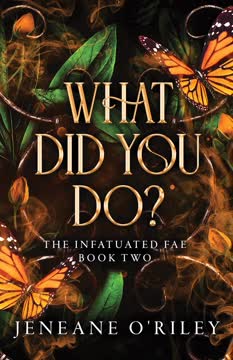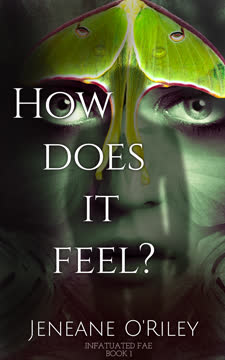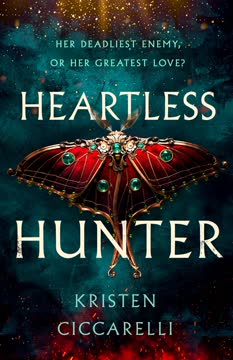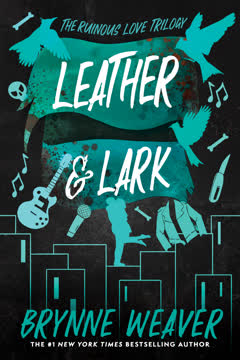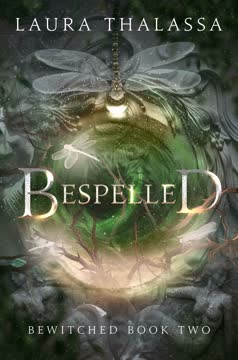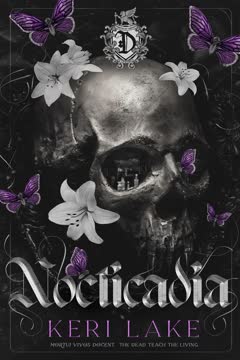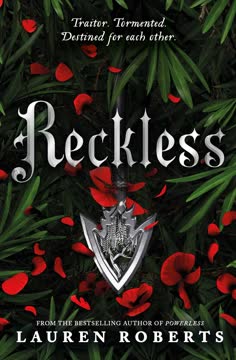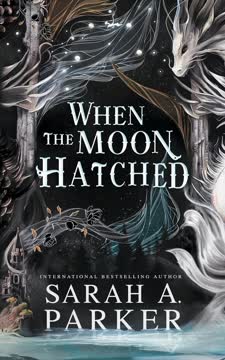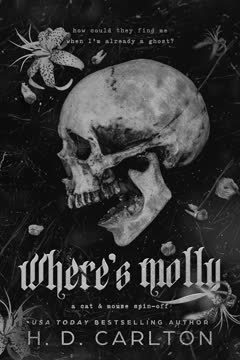Plot Summary
Schemes in the Shadows
In the fae realms, two rival courts—Seelie and Unseelie—are locked in a cold war of manipulation, betrayal, and ambition. Queen Saracen of Seelie and King Thanes of Unseelie conspire to create an army of monstrous fae by experimenting on humans and each other's kin. Their alliance is as much about lust and power as it is about mutual destruction. Saracen, desperate to prove her worth and seize ultimate power, orchestrates the deaths of her own husband and rivals, while Thanes seeks to control his son Mendax's formidable abilities. The stage is set for a generational conflict, with the children of both courts as pawns in a game of thrones, love, and vengeance.
Blood and Bondage
Mendax, the Unseelie prince, is tormented by the loss of Calypso (Caly), a human assassin who has left him both physically and emotionally scarred. His love for her is twisted, violent, and possessive, driving him to acts of brutality against his own people as he searches for her. Mendax's powers—smoke and mind control—are barely contained, and his bond with Caly is both his strength and his undoing. Meanwhile, Caly, haunted by her own actions, struggles with guilt and longing, torn between her assassin's training and the forbidden connection she shares with Mendax.
The Assassin's Heart
Caly, raised as an orphan and trained by Queen Saracen to be a fae assassin, is driven by a desperate need for belonging and vengeance. Her only hope of becoming a Seelie royal and reuniting with her found family is to complete a final, impossible task: kill the Unseelie prince Mendax. Her journey is fraught with memories of loss, manipulation, and the trauma of being used as a weapon. Caly's heart—literally split in two and held hostage by Saracen—symbolizes her fractured identity and the price of loyalty in a world where love and violence are inseparable.
Fae Rivalries Ignite
The rivalry between Seelie and Unseelie is mirrored in the personal relationships of their heirs. Caly's arrival in Seelie stirs jealousy, suspicion, and political intrigue. Eli (Aurelius), the Seelie prince and Caly's childhood friend, is torn between his love for her and his duty to his family. Princess Tarani, Saracen's daughter, resents Caly's presence and the threat she poses to the royal succession. As alliances shift and secrets unravel, the lines between hero and villain blur, and the true cost of power becomes apparent.
Welcome to Seelie
Caly's return to Seelie is both a homecoming and a trial. She is greeted with suspicion, manipulation, and the promise of conditional acceptance. Saracen's plans for Caly are revealed to be self-serving, and the warmth of the Seelie court is a façade for deeper rot. Caly's relationships with Eli and Tarani are tested as she navigates court politics, the threat of exposure, and the ever-present danger of her own powers. The castle's golden beauty masks a history of betrayal and bloodshed.
Smoke and Sunlight
The magical bond between Caly and Mendax manifests in unexpected ways, granting her fragments of his power and haunting her dreams with visions of violence and lust. Their connection is both a curse and a lifeline, complicating her feelings for Eli and her place in Seelie. As Caly struggles to control her smoke magic and resist Mendax's pull, she is forced to confront the darkness within herself and the reality that love, in the fae world, is as dangerous as any weapon.
The Queen's Poison
Queen Saracen's ambition knows no bounds. In a calculated move, she poisons her own husband, King Felix, to seize power and eliminate obstacles to her rule. Her actions set off a chain reaction of violence and retribution, culminating in the deaths of rivals and the destabilization of both courts. Saracen's manipulation of Caly, her children, and her enemies reveals the depth of her cruelty and the lengths she will go to maintain control. The consequences of her betrayal ripple through the realms, leaving no one untouched.
Secrets of the Past
Flashbacks reveal the true origins of Caly's powers and the trauma that shaped her. She is not merely a human assassin but the daughter of Zef, the last of the Artemi—a nearly extinct race with the power to absorb and redistribute magic. Her family's murder, orchestrated by Saracen, was designed to break and mold her into the perfect weapon. Caly's memories of loss, abuse, and survival are the crucible in which her strength and darkness are forged.
Ties That Bind
Caly's relationships are defined by magical and emotional ties that cannot be easily severed. Her bond with Mendax is both romantic and supernatural, granting her power but also making her a target. Eli, in a desperate act to save her life, ties his own to hers, ensuring that their fates are intertwined. These connections create a deadly triangle, as fae law forbids such overlapping bonds, and the only resolution is death for one of the parties. The tension between love, loyalty, and survival drives the narrative toward inevitable tragedy.
Monsters and Lovers
The boundaries between love and monstrosity are constantly tested. Caly's relationships with Mendax and Eli are fraught with passion, jealousy, and violence. Mendax's love is possessive and brutal, while Eli's is tender but no less consuming. Caly herself is both victim and perpetrator, capable of great violence and deep love. The story explores the idea that monsters are made, not born, and that the capacity for darkness exists in everyone.
The Price of Loyalty
As the war between Seelie, Unseelie, and the Fallen fae escalates, Caly is forced to choose between her own survival and the lives of those she loves. Saracen's betrayal is revealed in full, and Caly's loyalty is tested to the breaking point. The cost of allegiance is high: friends die, families are destroyed, and the line between hero and villain vanishes. Caly's ultimate act of vengeance against Saracen is both justice and tragedy, leaving her more alone than ever.
The Heart's Deception
Caly finally retrieves the other half of her heart, only to reveal that she was never the true Artemi heir—her sister was. The entire war, the manipulation, and the deaths were based on a lie. Caly's deception is her final act of agency, turning the tables on those who sought to use her. The restoration of her heart brings closure but not peace, as the consequences of her actions and the losses she has suffered haunt her.
Malvar's Torment
Caly is imprisoned in Malvar, the fae's most notorious prison, where psychological and physical torture are disguised as luxury. She is forced to watch animals die for her, her powers useless to save them. The cruelty of hope—being so close to freedom, love, and belonging, only to have it snatched away—breaks her spirit. Yet even in despair, Caly's resilience and cunning remain.
The Fallen's Rebellion
The Fallen fae, long exiled and persecuted, rise up to claim their place in the realms. Tarani, revealed as a secret leader of the Fallen, orchestrates a coup that topples the old order. Alliances are redrawn, and the balance of power shifts. Caly, Eli, and Mendax are caught in the crossfire, forced to navigate a new world where the rules have changed and old enemies may become allies.
The Final Betrayal
The final confrontation between Caly, Saracen, and the remnants of the old regime is brutal and heartbreaking. Walter, Mendax's loyal friend, sacrifices himself to save Caly, and Saracen is killed in a moment of poetic justice. The cost of vengeance is high, and Caly is left to reckon with the blood on her hands and the emptiness in her heart. The cycle of violence is complete, and innocence is lost forever.
Death and Resurrection
In the aftermath of the war, Caly, Eli, and Mendax are left to pick up the pieces. Walter is given a hero's funeral, and the survivors must find a way to live with their choices. The bonds that once defined them are now chains, and the only hope for freedom lies in facing the ultimate judgment. The story becomes one of survival, grief, and the search for meaning in a world that offers little comfort.
The Human Weapon
Caly's journey is ultimately one of self-discovery and agency. She is not defined by her powers, her lineage, or the roles others have forced upon her. In the end, she chooses her own path, refusing to be anyone's weapon or pawn. Her humanity—her capacity for love, pain, and resilience—is her greatest strength. The story ends with the promise of judgment and the hope that, even in a world of monsters, choice is possible.
Judgment Before the Fates
Summoned before the Fates by her father Zef, Caly must face the consequences of her actions and the tangled web of bonds and ties that have defined her life. The law of the fae is absolute: only one of the three—Caly, Eli, or Mendax—can survive the overlapping bonds. The story ends on the precipice of judgment, with the promise that the cycle of love, violence, and power will continue, but that, for the first time, Caly has the power to choose her own fate.
Characters
Calypso (Caly)
Caly is the protagonist, a human girl orphaned by violence and raised as an assassin by Queen Saracen. Her life is defined by trauma, manipulation, and a desperate need for family and acceptance. Trained to kill and used as a pawn in fae politics, Caly's heart is literally and figuratively split in two. She is haunted by guilt, rage, and longing, torn between her love for Mendax and Eli, and her own fractured identity. Caly's journey is one of self-discovery, as she learns that her greatest strength lies not in her powers or her role as a weapon, but in her humanity and capacity for choice.
Mendax
Mendax is the Unseelie prince, a being of immense power and violence, shaped by a lifetime of manipulation and betrayal. His love for Caly is possessive, brutal, and all-consuming, driving him to acts of both tenderness and savagery. Mendax is both victim and perpetrator, a monster made by the sins of his parents and the cruelty of his world. His bond with Caly is his salvation and his curse, and his journey is one of seeking redemption through love, even as he is doomed by his own darkness.
Eli (Aurelius)
Eli is the Seelie prince, Caly's childhood friend and the embodiment of light and hope. He is gentle, selfless, and fiercely protective, but also burdened by the expectations of his family and the weight of his own love for Caly. Eli's decision to tie his life to Caly's is both an act of devotion and a source of tragedy, as it entangles them in a web of fae law that can only end in death. Eli's struggle is to reconcile his love for Caly with the realities of power, duty, and loss.
Queen Saracen
Saracen is the Seelie queen, a woman driven by ambition, insecurity, and a desperate need for control. Her love is conditional and weaponized, and she is willing to sacrifice anyone—including her own children and Caly—to achieve her goals. Saracen's manipulation of Caly is both maternal and monstrous, and her ultimate betrayal is the catalyst for the story's final tragedies. She is a cautionary figure, showing the corrosive effects of power and the emptiness of victory won through cruelty.
Walter
Walter is Mendax's cousin and Caly's steadfast ally, a shifter who provides comfort, support, and a sense of home in a world of chaos. His bond with Caly is rooted in shared trauma and mutual respect, and his ultimate sacrifice is a testament to the power of friendship and loyalty. Walter's death is one of the story's most poignant moments, underscoring the cost of love and the tragedy of war.
Princess Tarani
Tarani is Saracen's daughter, initially portrayed as a spoiled and jealous princess but ultimately revealed as a leader of the Fallen fae. Her journey is one of awakening and rebellion, as she rejects her mother's legacy and fights for a new order. Tarani's relationship with Caly is fraught with rivalry and resentment, but also a shared understanding of what it means to be used as a pawn.
King Thanes
Thanes is the Unseelie king, a figure of terror and charisma whose machinations set the story's tragedies in motion. His manipulation of Saracen, Mendax, and the fae realms is driven by a lust for power and a willingness to destroy anyone in his path. Thanes is both a symbol of patriarchal violence and a cautionary tale of unchecked ambition.
Queen Tenebris
Tenebris is Mendax's mother, a powerful and tragic figure whose love for her son is both her strength and her undoing. Her rivalry with Saracen and her ultimate death at Saracen's hands are central to the story's cycle of vengeance and loss. Tenebris embodies the cost of love in a world where power is everything.
Zef
Zef is Caly's father, the last of the Artemi and a figure of mythic power and neglect. His decision to bestow the Artemi powers on Caly's sister, and his absence from Caly's life, are the source of much of her pain and confusion. Zef's summoning of Caly before the Fates is the story's final reckoning, forcing her to confront her origins and choose her own destiny.
Sid and Edin
Sid and Edin are prisoners in Malvar and secret leaders of the Fallen fae. Their powers and rebellion provide the catalyst for the story's final upheaval. They represent the possibility of change and the hope that even in a world of monsters, new alliances and futures are possible.
Plot Devices
Dual Timelines and Unreliable Narration
The narrative weaves between past and present, revealing key events and secrets through flashbacks and shifting perspectives. This structure creates suspense and allows for gradual revelation of character motivations and betrayals. The use of unreliable narrators—characters who lie to themselves and others—heightens the sense of uncertainty and moral ambiguity.
Magical Bonds and Ties
The central plot device is the magical bond between Caly and Mendax, and the life-tie between Caly and Eli. These connections are both sources of power and traps, creating a love triangle that can only be resolved through death. The bonds symbolize the ways in which love, loyalty, and trauma can both empower and imprison.
Heart as Literal and Metaphorical Object
Caly's heart, split in two and held hostage, is both a literal object of power and a metaphor for her fractured identity. The quest to restore her heart drives the plot and serves as a symbol for the search for wholeness, agency, and self-acceptance.
Power, Betrayal, and the Cycle of Violence
The story is driven by cycles of betrayal, revenge, and the pursuit of power. Characters are constantly forced to choose between survival and morality, and the consequences of violence are inescapable. The narrative structure mirrors this cycle, with each act of betrayal leading to further tragedy.
Subversion of Hero and Villain Tropes
The story deliberately blurs the lines between hero and villain, showing that everyone is capable of both great love and great cruelty. Caly, Mendax, and Eli each embody aspects of both, and the narrative challenges the reader to question their own assumptions about morality, agency, and redemption.
Foreshadowing and Symbolism
Recurring symbols—animals drawn to Caly, the smoke of Mendax's power, the gold of Seelie—foreshadow key events and reveal deeper truths about the characters. The use of dreams, visions, and magical omens creates a sense of inevitability and fate, even as the characters struggle to assert their own will.
Analysis
What Did You Do? is a dark, emotionally charged fantasy that interrogates the nature of power, love, and agency in a world where everyone is both a victim and a perpetrator. Through its complex characters and morally ambiguous plot, the novel explores how trauma, manipulation, and the longing for belonging can turn even the most innocent into monsters. The story's use of magical bonds and literalized hearts as plot devices underscores the ways in which love and loyalty can be both empowering and destructive. By subverting traditional hero/villain dynamics and centering a protagonist who is both deeply flawed and deeply human, the book challenges readers to question the binaries of good and evil, and to recognize the power of choice—even in the face of fate. Ultimately, What Did You Do? is a meditation on survival, the cost of vengeance, and the possibility of redemption, offering no easy answers but insisting on the importance of agency and self-knowledge in a world built on lies.
Last updated:
Review Summary
What Did You Do? received mixed reviews, with many readers disappointed compared to the first book. Common criticisms include poor writing quality, inconsistent characters, and a messy plot. Some enjoyed the spicy scenes and plot twists but felt the love triangle was poorly executed. Positive reviews praised the world-building and character development. Many readers found the book rushed and in need of editing. Despite the criticisms, some fans remain invested in the series and look forward to the next installment.
Infatuated Fae Series
Similar Books
Download PDF
Download EPUB
.epub digital book format is ideal for reading ebooks on phones, tablets, and e-readers.
